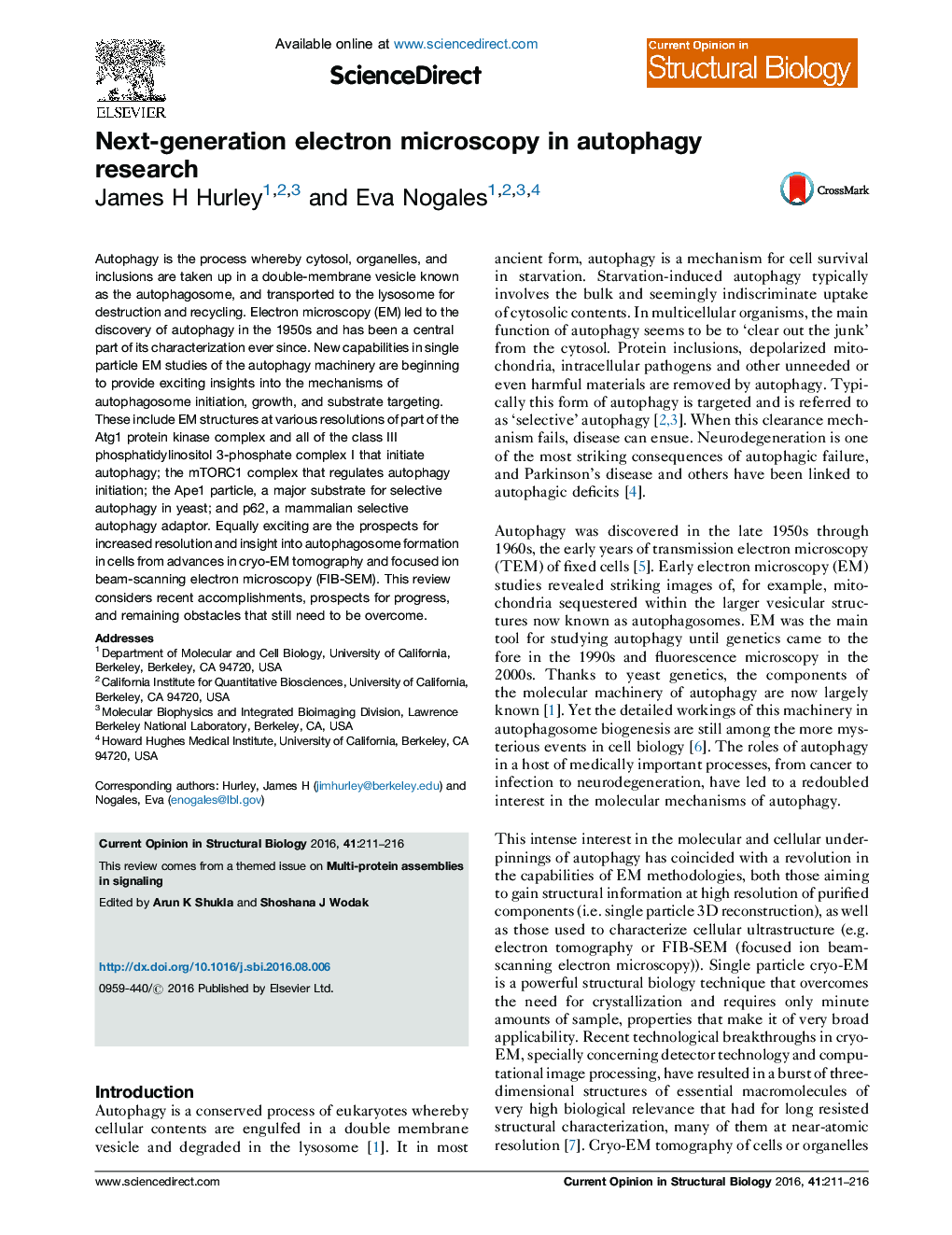| Article ID | Journal | Published Year | Pages | File Type |
|---|---|---|---|---|
| 8319536 | Current Opinion in Structural Biology | 2016 | 6 Pages |
Abstract
Autophagy is the process whereby cytosol, organelles, and inclusions are taken up in a double-membrane vesicle known as the autophagosome, and transported to the lysosome for destruction and recycling. Electron microscopy (EM) led to the discovery of autophagy in the 1950s and has been a central part of its characterization ever since. New capabilities in single particle EM studies of the autophagy machinery are beginning to provide exciting insights into the mechanisms of autophagosome initiation, growth, and substrate targeting. These include EM structures at various resolutions of part of the Atg1 protein kinase complex and all of the class III phosphatidylinositol 3-phosphate complex I that initiate autophagy; the mTORC1 complex that regulates autophagy initiation; the Ape1 particle, a major substrate for selective autophagy in yeast; and p62, a mammalian selective autophagy adaptor. Equally exciting are the prospects for increased resolution and insight into autophagosome formation in cells from advances in cryo-EM tomography and focused ion beam-scanning electron microscopy (FIB-SEM). This review considers recent accomplishments, prospects for progress, and remaining obstacles that still need to be overcome.
Related Topics
Life Sciences
Biochemistry, Genetics and Molecular Biology
Biochemistry
Authors
James H Hurley, Eva Nogales,
